Chapter: Mathematics (maths) : Linear System with Random Inputs
Linear System with Random Inputs
LINEAR SYSTEM WITH RANDOM INPUTS
Introduction
Linear
time invariant systems
Linear
systems with random inputs
Auto
Correlation and Cross Correlation functions of inputs and outputs
System
transfer function
Introduction
Mathematically
a "system" is a functional relationship between the input x(t) and
y(t). We can write the relationship as
y(f) =
f[x(t): –∞< +
<∞]
Let x(t)
represents a sample function of a random process {X(t)}. Suppose the system
produces an output or response y(f) and the ensemble of the output functions
forms a random process {Y(t)}. Then the process {Y(t)} can be considered as the
output of the system or transformation 'f' with {X(t)} as the input and the
system is completely specified by the operator "f".
1 LINEAR TIME INVARIANT SYSTEM
Mathematically
a "system" is a functional relationship between the input x(t) and
output y(t). we can write the relationship

2 CLASSIFICATION OF SYSTEM
1. Linear System: f is
called a linear system, if it satisfies

2. Time Invariant System:

form a
time invariant system.
3. Causal System:
Suppose
the value of the output Y(t) at t = t0 depends only on the past values of the
input X(t), t≤t0.

then such
a system is called a causal system.
4. Memory less System:
If the
output Y(t) at a given time t = t0 depends only on X(t0) and not on any other
past or future values of X(t), then the system f is called memory less system.
5. Stable System:
A linear
time invariant system is said to be stable if its response to any bounded input
is bounded.
REMARK:
i) Noted
that when we write X(t) we mean X(s,t) where s ∈ S, S is the sample space. If the
system operator only on the variable t treating S as a parameter, it is called
a deterministic system.

a) Shows a
general single input - output linear system
b) Shows a
linear time invariant system
3 REPRESENTATION OF SYSTEM IN THE FORM OF
CONVOLUTION
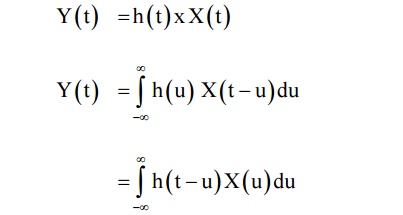
4 UNIT IMPULSE RESPONSE TO THE SYSTEM
If the
input of the system is the unit impulse function, then the output or response
is the system weighting function.
Y(t) =
h(t)
Which is
the system weight function.
4.1 PROPERTIES OF LINEAR SYSTEMS WITH RANDOM INPUT
Property 1:
If the
input X(t) and its output Y(t) are related by

Property 2:
If the
input to a time - invariant, stable linear system is a WSS process, then the
output will also be a WSS process, i.e To show that if {X(t)} is a WSS process
then the output {Y(t)} is a WSS process.
Property 3:


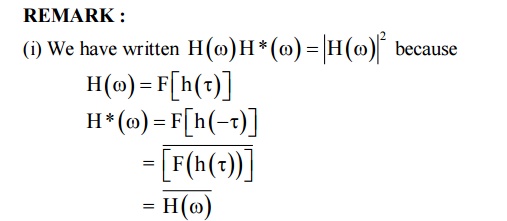
(ii)Equation
(c) gives a relationship between the spectral densities of the input and output
process in the system.
(iii)System
transfer function:
We call H
(ω ) = F {h (τ)} as the power transfer function
or system transfer function.
SOLVED PROBLEMS ON AUTO CROSS CORRELATION FUNCTIONS
OF INPUT
AND OUTPUT
Example :5.4.1
Find the
power spectral density of the random telegraph signal.
Solution
We know,
the auto correlation of the telegraph signal process X(y) is
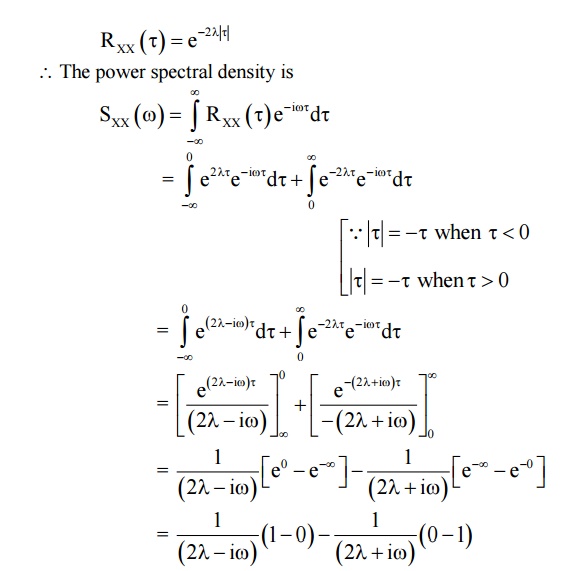
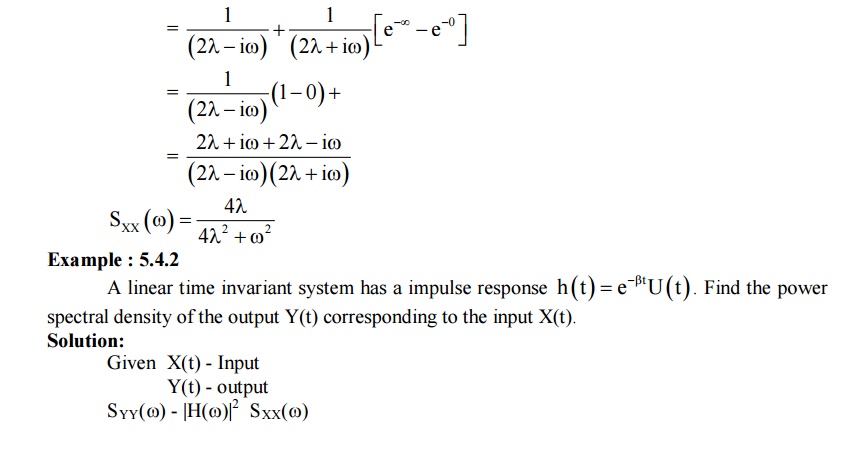
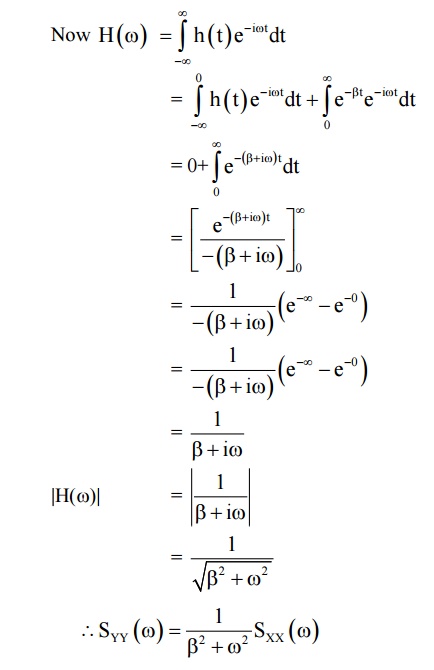

WORKEDOUT EXAMPLES
Example: 1
Find
the power spectral density of the random telegraph signal.
Solution
We
know, the auto correlation of the telegraph signal process X(y) is
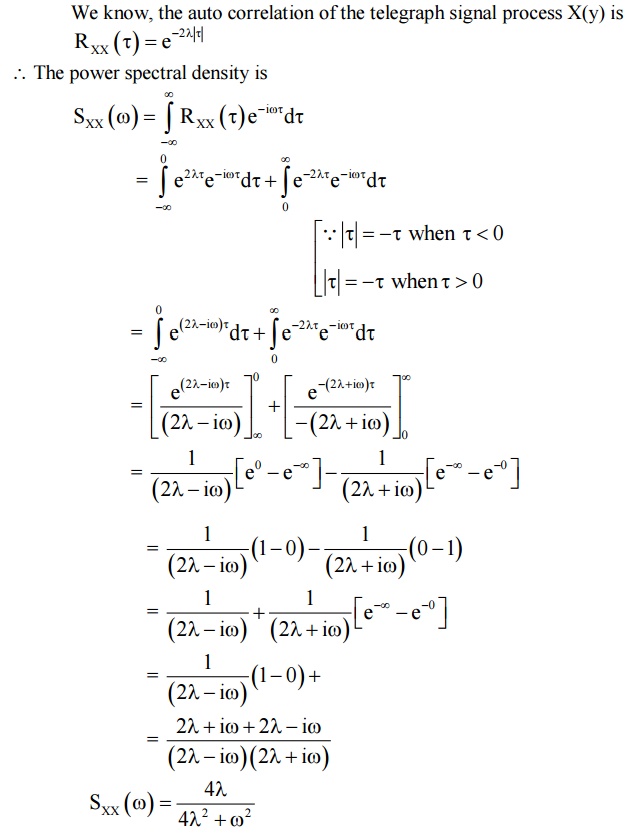
Related Topics